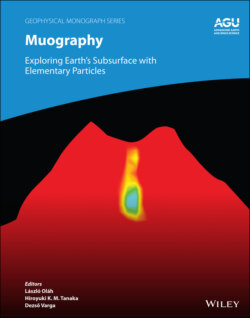Читать книгу Muography - Группа авторов - Страница 51
3.4 MORE EXACT FORMULATION
ОглавлениеThe formulation of the linear inversion described in the previous section works fine as a first‐order approximation; however, it is not precise from the viewpoints of muography data. For instance, when one imagines a bumpy topography crossed by a certain field of view of the muography detector, the approximation used in equation 3.8 is no longer valid, because the muon flux attenuates nearly exponentially as a function of density length. Describing the field of view as a representative line of sight would cause significant biases on estimation. Jourde et al. (2015) derived a comprehensive formulation using the concept of acquisition kernel, which relates a tiny density fluctuation at a certain point in the space to the resulting variation on muon flux (or gravity data). Since such a relationship is not linear, the inversion becomes inherently non‐linear. Jourde et al. (2015) propose linearization for small density fluctuation around the initial guess. When one solves such a problem, the inversion would be sequential; it starts from the initial density model and it is iteratively improved by multiple Bayes updates until convergence.
Lelièvre et al. (2019) employed tetrahedral meshes instead of rectangular meshes, to reproduce significant topography without requiring large numbers of mesh cells. They demonstrate that such meshes could be produced by the free software TetGen (Si, 2015).
